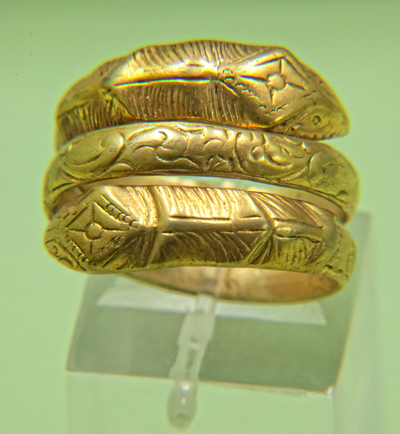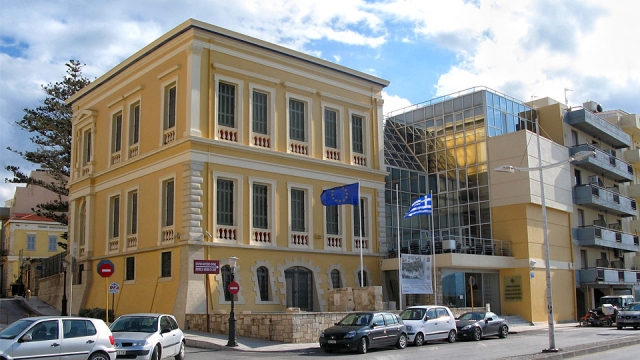Hosted in a wonderful neoclassical building (constructed in 1903), the Historical Museum of Crete houses almost the entire Cretan history, from the first Christian centuries to modern times. Byzantine, Venetian and Ottoman period, 19th century Cretan revolutions, WWII... All these periods and historical events are imprinted on sculptures, ceramics, coins, jewellery, frescoes, relics, icons, manuscripts, furniture, folk art, photographs and audiovisual material. In one of the chambers you will see a large model (4x4m) of 17th Chandax, as the city of Heraklion was named during this period, when it was at the peak of its power. If you take a careful look at it you will notice monuments that no longer exist.

The tour continues in Ceramics and Sculpture Collections, organised in chronological order, and then to Byzantine and Venetian collections. On the first floor you will see two paintings by Domenicos Theotocopoulos (El Greco): The Baptism of Christ (1567) and View of Mt. Sinai and the Monastery of St. Catherine (1570), which are the only works by the artist on display on Crete.
The following sections present exhibits of modern Cretan history, starting with the Ottoman collection, which includes objects from secular and religious life (Ottoman wall paintings, inscriptions, architectural elements from Ottoman religious foundations, documents and minor objects). The second part of this section deals with the period of revolutionary upheaval in the 19th century, ending with the Union of Crete with Greece. Finally, the WWII collection includes audiovisual material and documents from the Battle of Crete, National Resistance and the Occupation. This section is supplemented by the study and library of Emmanouil Tsouderos, then Prime Minister of Greece.
The tour continues in the Nikos Kazantzakis Rooms, with the author's study and library from his house in Antibes, France. Personal mementoes, manuscripts and first editions of his works in many languages complete the picture of his life and works.

The tour of Cretan history finishes with the Ethnographic Collection, which is basically a presentation of Cretan rural society and peasant activities (olive growing and viniculture, cereal cultivation, animal husbandry) and important milestones in life (birth, baptism, marriage). These human activities are closely bound up with the natural environment, culture and family space. There you will also see a reconstruction of a Cretan agricultural house interior.
From time to time the Historical Museum of Crete hosts temporary exhibitions. In this period (until October 2012) visitors can see an exhibition dedicated to the life and work of the Greek Nobel prize poet Odysseas Elytis.
Finally, we suggest you take a rest in the peaceful café of the Museum that has two exterior spaces to sit: one on the backyard, under the shade of trees, and a second facing the sea.
The Library at the Historical Museum of Crete contains rare editions, periodicals, a local newspaper archive, a rich collection of historical archives and photographic material. It is directed at the general public as well as researchers.






